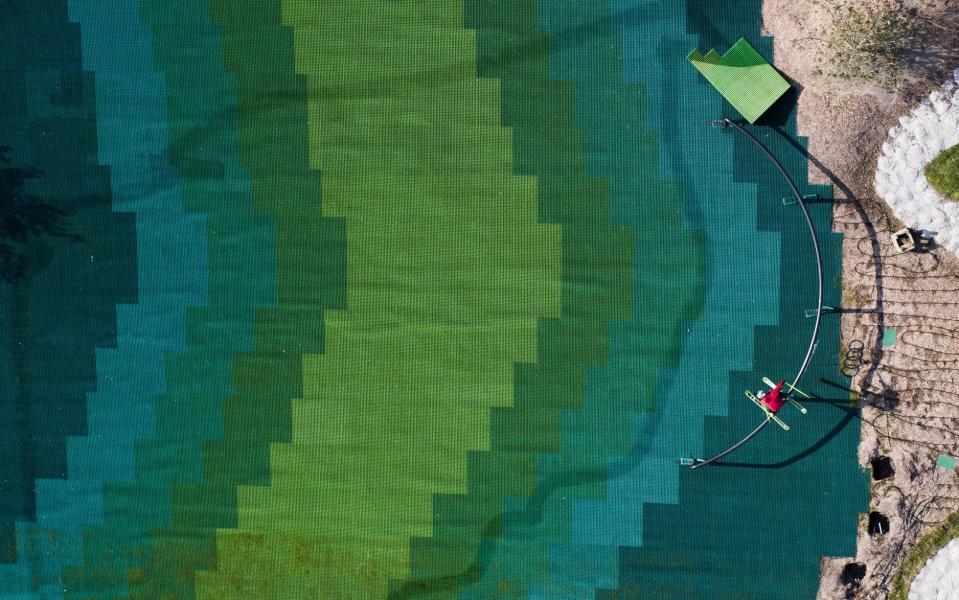Watch: First look at Copenhagen's spectacular new ski slope – on top of a power plant

Artificial ski centres can be found in some weird and wonderful places, but the new slope coming to Copenhagen is the first of its kind in the world: a 500-metre piste on top of a power plant.
CopenHill, as it has been named, is set to open to the public later this summer but parts are now ready for use. Cue the arrival of Swedish freeskier Jesper Tjäder, who has released a video of himself pulling off what must be the first ski run down the side of a power plant.
“This building made it so easy for me to figure out what to do for this project,” said Tjäder. “It’s not really about what tricks I do. It’s skiing down a building that’s the cool thing.”
The site of the new man-made mountain is known to locals as the Amager Bakker, translated as Amager Hill, and is a 15-minute drive from the centre of Copenhagen.
The project has been over a decade in the making. On opening this summer the 85m-high roof will also house a climbing wall and hiking trails, as well as the 500-metre slope.

Ski slopes in bizarre locations are becoming more and more common – last week plans were revealed to build America’s largest indoor slope on a landfill site in Virginia. There has also been an influx of new offerings in China, including the world’s largest, which covers roughly 80,000 square metres, in Harbin, near the country’s northern border with Russia.
The Amager Bakker building, now rebranded as CopenHill, is a waste-to-energy power plant, which processes up to 300 lorry loads of refuse a day, from approximately 600,000 households and 70,000 businesses in the city.
It opened in 2017 and is the cleanest waste-to-energy plant in the world, forming part of Copenhagen’s aim to be the world’s first carbon-neutral city by 2025. This initiative also includes plans for all vehicles in the city to be powered by electricity, hydrogen or biofuels and for up to 75 per cent of all journeys to be made by bicycle.
In partnership with Audi Nines, which released the video on its YouTube channel, the 25-year-old Tjäder travelled to Denmark to meet the man behind the design of CopenHill, Danish architect Bjarke Ingels. In a 10-minute documentary, Ingels explains why the new slope is more than just marketing gimmick, but an effort to make skiing more sustainable.
“We want the world to know about this, so that people will come and try this new kind of hybrid between a building and a landscape,” said Ingels.
“It is really a man-made mountain of activity,” said Ingels, who also designed the building’s sleek and futuristic exterior.

“Very soon it’s going to be a fact, that in Copenhagen we ski on the roofs of our power plants,” said Ingels.
He wants to find ways for sustainability projects, like CopenHill, to improve, rather than restrict, quality of life.
“Sustainability is always seen in the context of this kind of urgent situation. But what if sustainable cities and buildings actually are not all about the things you can’t do, but all the things you can do? What if a sustainable city or building actually has more opportunities, is more enjoyable than the non-sustainable one?” he asks in the documentary.

Sustainability is an increasingly important issue for ski resorts around the world as many are battling with unpredictable weather patterns caused by global warming. Recently resorts have been battling to clear walls of snow left over from a winter of record-breaking snowfall, ahead of their summer seasons. In previous years its been the opposite story when concerns have grown about melting glaciers and shortening ski seasons. Artificial and indoor slopes are becoming increasingly popular as a way to prolong the ski industry in many areas.

